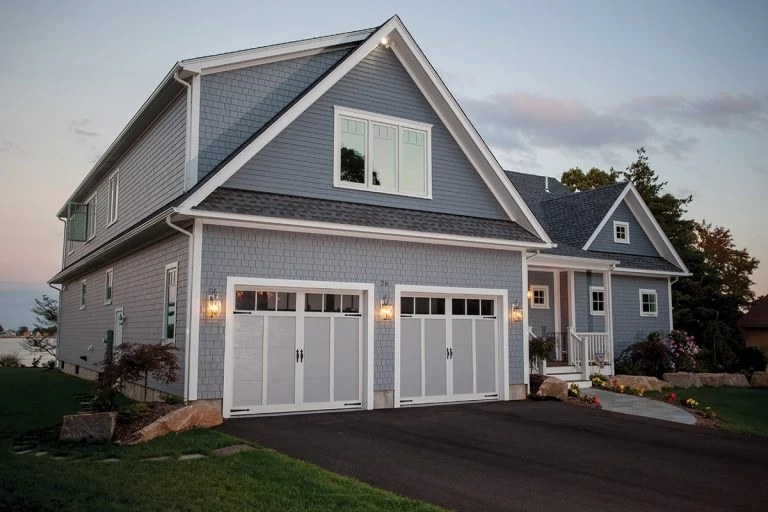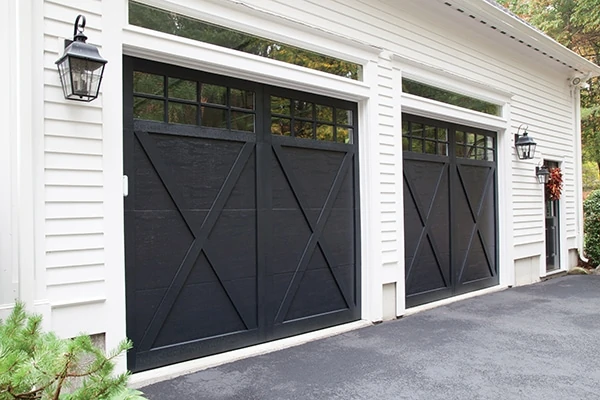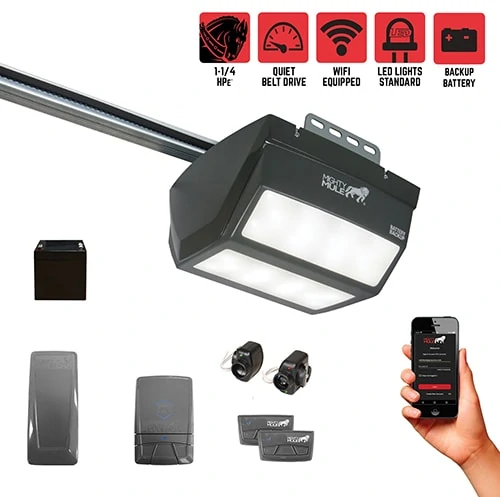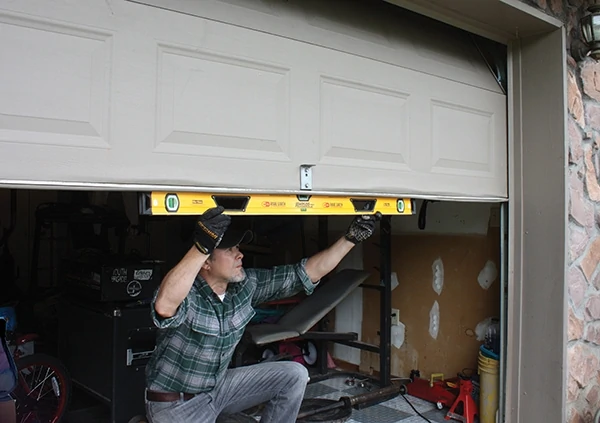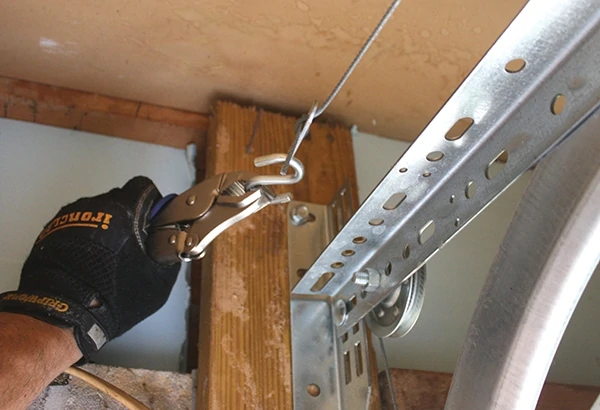By Ran Keller
Garage doors are opened and closed multiple times a day, yet few homeowners conduct regular checks and inspections on them. In fact, they are often the most neglected part of a house, even though they are frequently used and make up a large portion of a home’s outward appearance.
Conducting repeated tests on a garage door and its opener can help you catch any problems before they become worse. Moreover, inspections ensure that it is safe. Safety is a particularly important concern when you have kids and pets in the house.
How can you maintain your door so it lasts longer? Here are 10 tips:
CHECK THE HARDWARE
The easiest way to do a quick hardware check is to listen to the door when it opens and closes. It should move effortlessly and make minimum noise. Scraping noises, grinding sounds and jerky movements suggest there is an issue.
Furthermore, ensure that all loose hardware is tightened up. Use a socket wrench to fasten any loose bolts or roller brackets.

REVIEW THE BALANCE
To review your door’s balance, you’ll need to first disconnect the opener to the door. Next, manually move the door halfway up or down. It should stay suspended when you let it go. If it doesn’t, the garage door isn’t balanced. (See sidebar on adjusting doors with extension springs.)
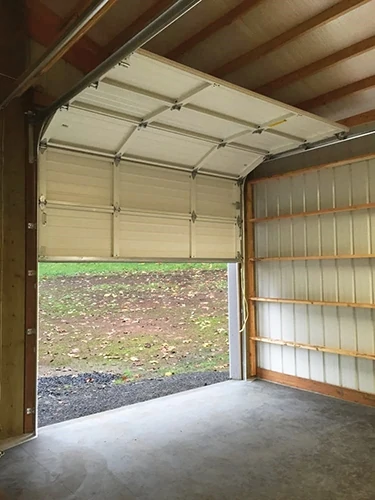
If the garage door uses a torsion spring that is mounted parallel along the top of the door, you should call a professional garage door repairman to correct a problem with the balance. The good news is that the design of the torsion spring holds its balance more reliably than extension springs.
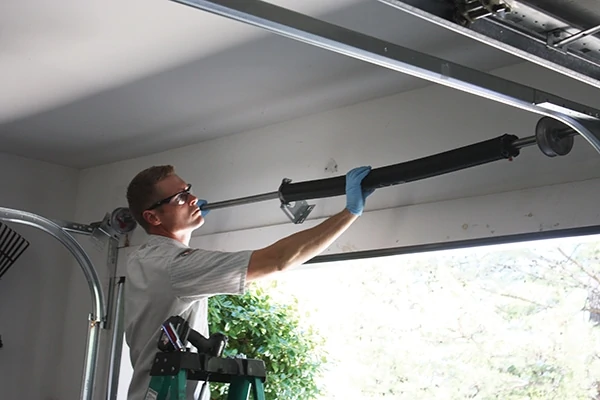
DON’T FORGET THE REMOTE BATTERIES
Garage doors are opened and closed innumerable times a year. Therefore, it’s essential to replace the remote’s batteries periodically. The remote’s manual should provide the information on when you need to replace the batteries, which are commonly overlooked until the day the door refuses to open.
REPLACE WORN WEATHER-STRIPPING
Look at the sides and bottom of your door. There should be weather-stripping on the sides and a rubber weather-seal on the bottom. If it’s cracked or the weather-stripping on the sides is jamming the door, consider adjusting it or replacing it altogether.
Wooden garage doors might not have weather-stripping at the bottom. However, ideally, you should
add weather-stripping to it, which can be purchased at any hardware store, and get it painted to protect the wood.
LUBRICATE MOVING PARTS
Garage doors are connected by springs, rollers, nuts and bolts. All of these moving parts are used constantly every time you press the remote, and the door opens and closes. Hence, it’s vital to lubricate these moving parts with spray lubricant for springs, and white lithium grease for the chain or screw.
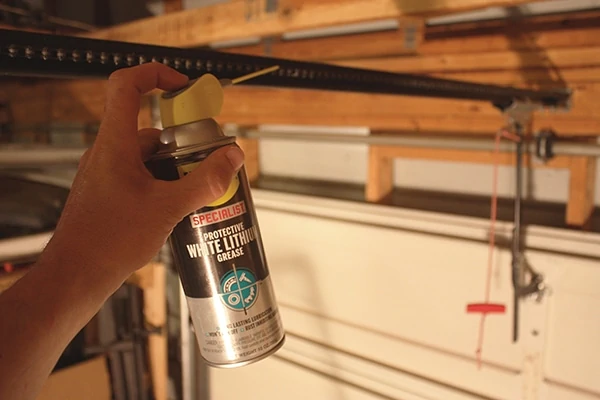
Don’t smear lubricant on the track, because it could cause the door to slip and lose its balance.
EXAMINE THE CABLES
Cables are responsible for lifting your door. Examine them periodically for damage. If you notice signs of wear and tear, contact a garage door repair service rather than take matters into your own hands. High-tension cables have the ability to inflict serious injuries and should always be handled by a professional.
TEST THE SAFETY DEVICE
Every door is equipped with two safety features which are mechanical and photocell. To test the mechanical safety feature, simply hold a piece of wood or brick below it and close the door. Once the door comes in contact with the wooden piece, it should automatically reverse its direction and go up. If it doesn’t, you will need to adjust the downforce control limit. Read your opener’s manual for directions on how to adjust it.
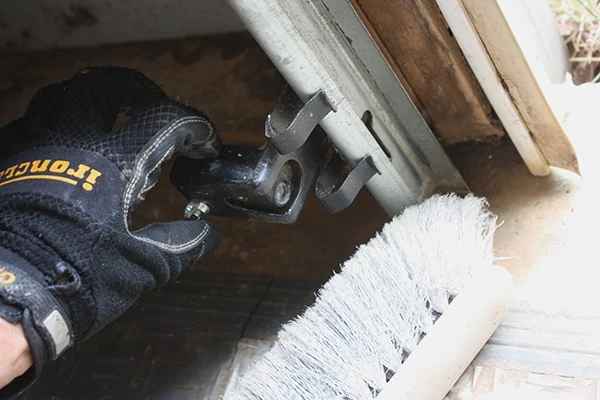
The second safety feature, photocell which uses photo-eye sensors, are located at the bottom of your garage door and have a beam. They prevent the door from closing if an object is in the door’s path. You can test this feature by closing the door and placing an object quickly in the path of the beam. If the door stops closing, it’s in good working condition. If it doesn’t, clean the sensors with a damp cotton ball and retry the process.
REMOVE RUST
Rust tends to accumulate on steel doors. Locate the rusted areas, sand, prime and finally paint over them. Wooden doors should also be examined for damages and kept painted for protection.
KEEP THE TRACKS CLEAN
Dirty tracks can hinder the opening/closing action of the door. Talk to a garage door specialist in order to get the best cleaner for the tracks on your door. Note: Do not lubricate the tracks or use an all-purpose cleaner on them.
CLEAN THE DOOR
Last but certainly not the least, it’s imperative to wash your garage door with an all-purpose cleaner. You can do it while washing your cars during the weekend and make it a fun family activity. Cleaning removes built-up grease and gunk and maintains your house’s spotless appearance.
Use the aforementioned garage door maintenance tips to ensure that your door lasts long and saves you on repair costs. Most of these suggestions are easy to follow and only take a few minutes. It’s also a good idea to call a garage door repairman to conduct biannual inspections. Always keep your door clean, fully-functional and safe throughout the year.
Editor’s Note: Ran Keller is an experienced handyman who’s been working for EliteGarageWA for 10 years. When he’s not fixing garage doors, he likes to share his repairment ideas and knowledge with others.
Side Note One
SAFETY TIPS FOR GARAGE DOORS
“When you think about it, the garage door is likely the most used door to your home,” says Jeffrey Nofziger, president of Haas Door in Wauseon, Ohio. “Your garage door opens and closes several times a day. Ensuring that it’s operating efficiently and safely is a smart move for homeowners.”
The following are a few tips to make sure your garage door operates as safely as possible.
Replace Old Springs. Your garage door’s springs are arguably the most important and most dangerous part of your door. Springs wear out. When they break, injury can result. If you have an older garage door, have your springs inspected by a professional technician and replaced if needed. If your door has two springs, replace both, even if one is not broken. This will not only prevent any damage caused by the breaking of the second spring, but also keep your door working efficiently.
Check Your Cables. Visually inspect the cables that attach the spring system to the bottom brackets on both sides of the door. If these cables are frayed or worn, they are in danger of breaking, which can cause injury. Due to the dangers associated with high spring tension, these cables should be replaced only by a trained, professional technician.
Use a Safety Cable. If your garage door has extension springs, you need a safety cable that runs through the spring and secures to the wall or ceiling at each end. When your garage door is down, extension springs are under high tension. If the spring breaks, it may cause injury. A safety cable can keep that broken spring contained. If you have extension springs but do not have a safety cable, call your local dealer for a safety inspection.
Watch Your Fingers! Every year, many unsuspecting homeowners injure their fingers by placing them between the door sections to pull down on the door. If your door lacks pinch-resistant joints, you should have lift handles or suitable gripping points on the inside and outside of the door. Even if your door has an opener, the door must occasionally be operated manually. Never place your fingers between the door sections. If you manually open or close the door, use the handles or the safe gripping points.
Use the Old Track? When buying a replacement garage door, some homeowners are tempted to save a few dollars by putting the new door on the old track. However, your old track may not fit with your new door, depending on the thickness of your sections, the weight of the door, the headroom required, the location of the garage door opener, and other considerations. The track and sections work together as a system. For maximum performance and long life, you should use the track that is designed for your specific door.
Man the Manual. Keep the owner’s manuals for your door and opener hanging near the door for easy reference. Every model of door and opener has specific safety instructions unique to that model. Where is your manual?
Learn more about new garage door designs and safety tips at www.haasdoor.com.
Side Note Two
MIGHTY MULE GARAGE DOOR OPENERS
For more than 30 years, Mighty Mule has offered professional-grade gate openers that are both affordable and easy to install. Now, Mighty Mule brings those features to a new line of garage door openers. The three models feature DC motors with a power range of 3/4 HPe to 1-1/4 HPe, each with a steel-reinforced belt drive for super quiet operation. Two models, the 1HPe MM9434K and the 1-1/4 HPe MM9545M, are enabled with the Mighty Mule Smart Garage Door app that lets you monitor and control the opener from the convenience of your mobile phone. The app also tracks garage door activity, notifying you when the garage door opener and light were used. The 3/4- HPe MM9333H can be upgraded to provide “smart” control with the addition of a Mighty Mule WiFi wall station. All three models include LED lights and a four-piece 7-ft. Trail (expandable to 8 ft.) for easy assembly. And the top-of-the-line MM9545M includes a battery backup for performance during a power outage. Each model is protected by a limited lifetime warranty on motor, belt and LED lights. For more information, visit www.mightymulestore.com.
Side Note Three
BALANCE A GARAGE DOOR THAT HAS EXTENSION SPRINGS
To test the balance of a garage door that has extension springs, first move the garage door up and down until you find a place where the door stays suspended when you let go. If it doesn’t stay in place when roughly halfway open, you will need to balance the door.
First prop the door open with a stepladder or sawhorse to remove tension from the springs. Once the spring is safely free of tension, remove it from its track hanger. If the door was closing too quickly, move the spring to the next higher hole on the bracket. If the door was opening too quickly, move it to the next lower hole. Adjust the springs on both sides of the door the same way, the retest the door balance.
Close the door and use a bubble level to determine the door is level across the bottom when it contacts the ground. If this is not the case, adjust the spring tension on each side of the door until it does.
To make fine adjustments, you can adjust the lifting cable instead of the spring. The cable is attached to the door and runs to an S-hook that attaches to the track support. With the door propped open, take the S-hook out of the support, and tighten or loosen the cable as needed.


